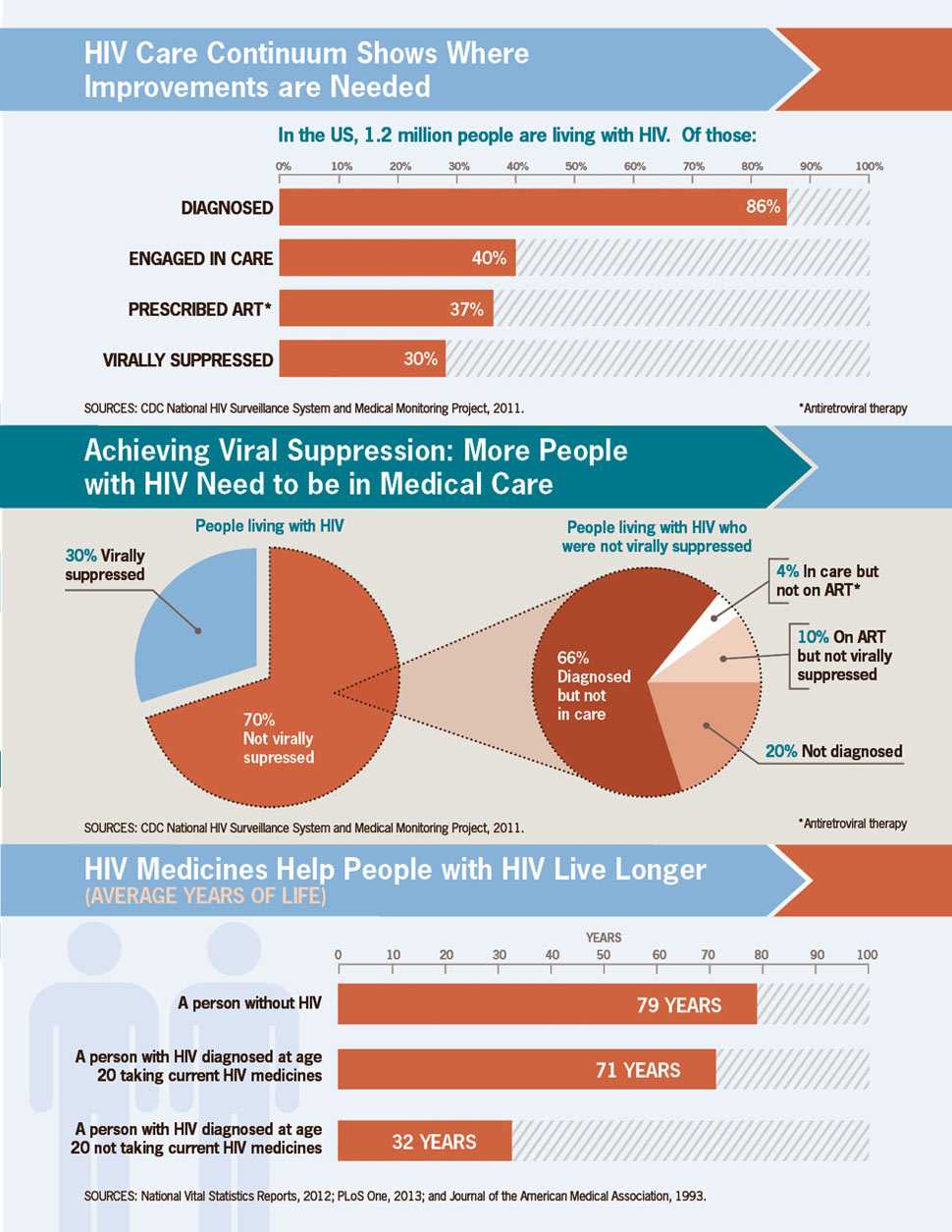HIV Care Saves Lives infographic

Viral suppression is the goal of HIV medical care. There are four key steps:
Step 1: HIV testing and diagnosis.
- About 14% of people living with HIV have never been diagnosed.
- Everyone needs to be tested to find out if they have HIV so they can start getting the medical care needed for viral suppression and reduce their risk of transmitting the virus to others.
Step 2: Getting and keeping people living with HIV in medical care.
- Only 40% of people living with HIV have received regular HIV medical care.
- Once in medical care, people can get HIV medicines and prevention services to help them stay healthy and protect their partners.
- Doctors, nurses, and other health care providers can use strategies, such as appointment reminders, to help patients stay in care.
Step 3: Prescribing HIV medicines.
- Only 37% of people living with HIV are prescribed HIV medicines. Too many have not been diagnosed or are not in HIV medical care.
- However, of patients in HIV medical care, 92% are prescribed HIV medicines.
- Doctors, nurses, and other health care providers should prescribe HIV medicines to everyone with HIV to lower the amount of virus in the body.
Step 4: Helping patients achieve viral suppression.
- Only 30% of all people living with HIV have achieved viral suppression. Too many have not been diagnosed, are not in medical care, or are not taking HIV medicines.
- However, of patients in HIV medical care, 76% achieve viral suppression.
- Doctors, nurses, and other health care providers play an important role in helping their patients start and stay on HIV medicines.
SOURCES: CDC National HIV Surveillance System and Medical Monitoring Project, 2011.

HIV care Continuum Shows Where Improvements are Needed
Of the 1.2 million people living with HIV, 86% are diagnosed, 40% are engaged in care, 37% are prescribed antiretroviral medicines, and 30% are virally suppressed.
Achieving Viral Suppression: More People with HIV Need to be in Medical Care
Pie chart #1: Among all people living with HIV, 30% are virally suppressed and 70% are not virally suppressed. Pie chart #2: Among all people living with HIV who are not virally suppressed, 66% are diagnosed but not in care; 20% are not diagnosed; 10% are on antiretroviral medicines but not virally suppressed; and 4% are in care but not on antiretroviral medicines.
HIV Medicines Help People with HIV Live Longer
The average lifespan of a person without HIV is 79 years. The average lifespan of a person with HIV diagnosed at age 20 taking current HIV medicines is 71 years. The average lifespan of a person with HIV diagnosed at age 20 not taking current HIV medicines is 32 years.
- Page last reviewed: November 25, 2014
- Page last updated: November 25, 2014
- Content source:
Error processing SSI file


 ShareCompartir
ShareCompartir